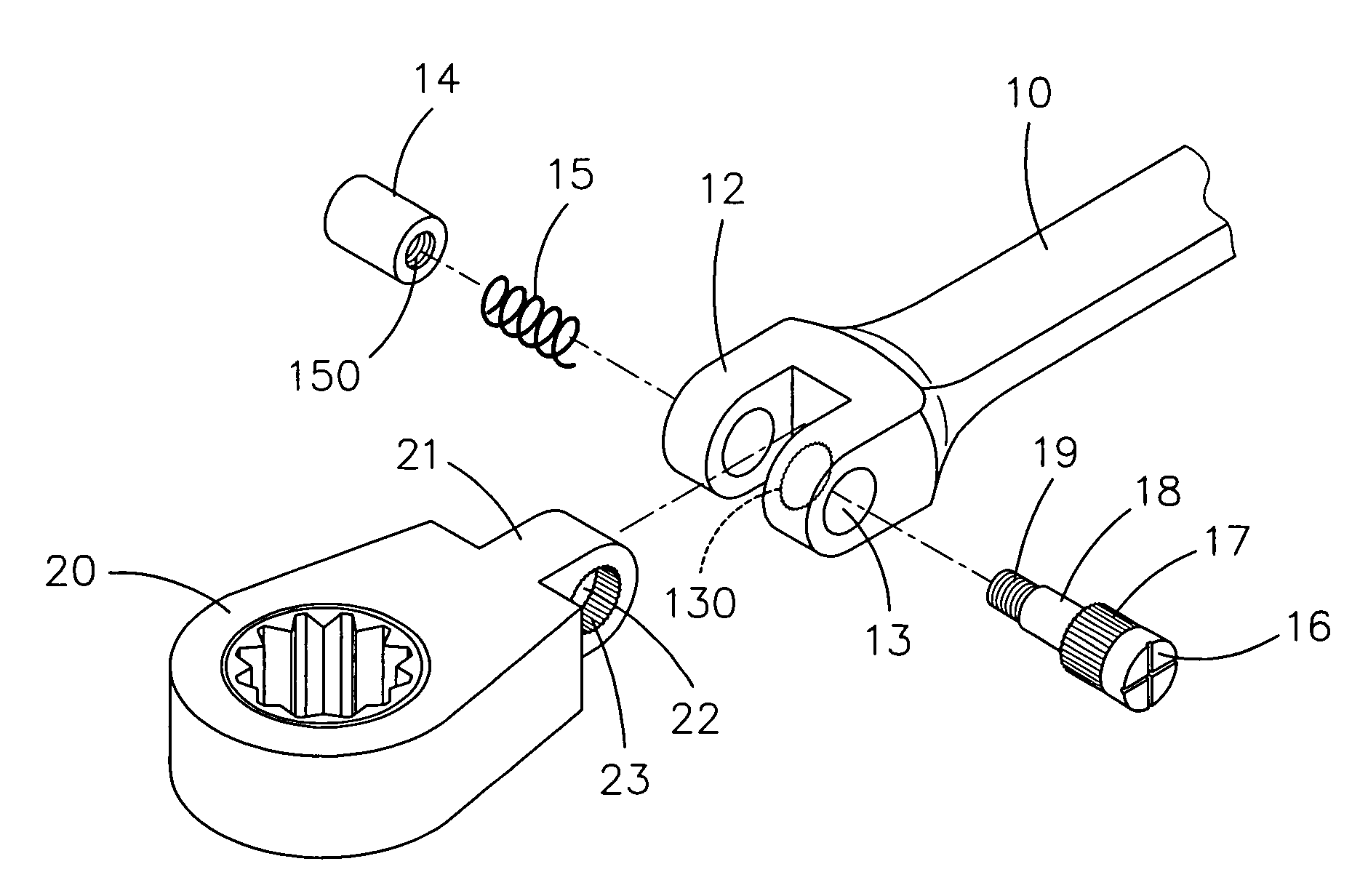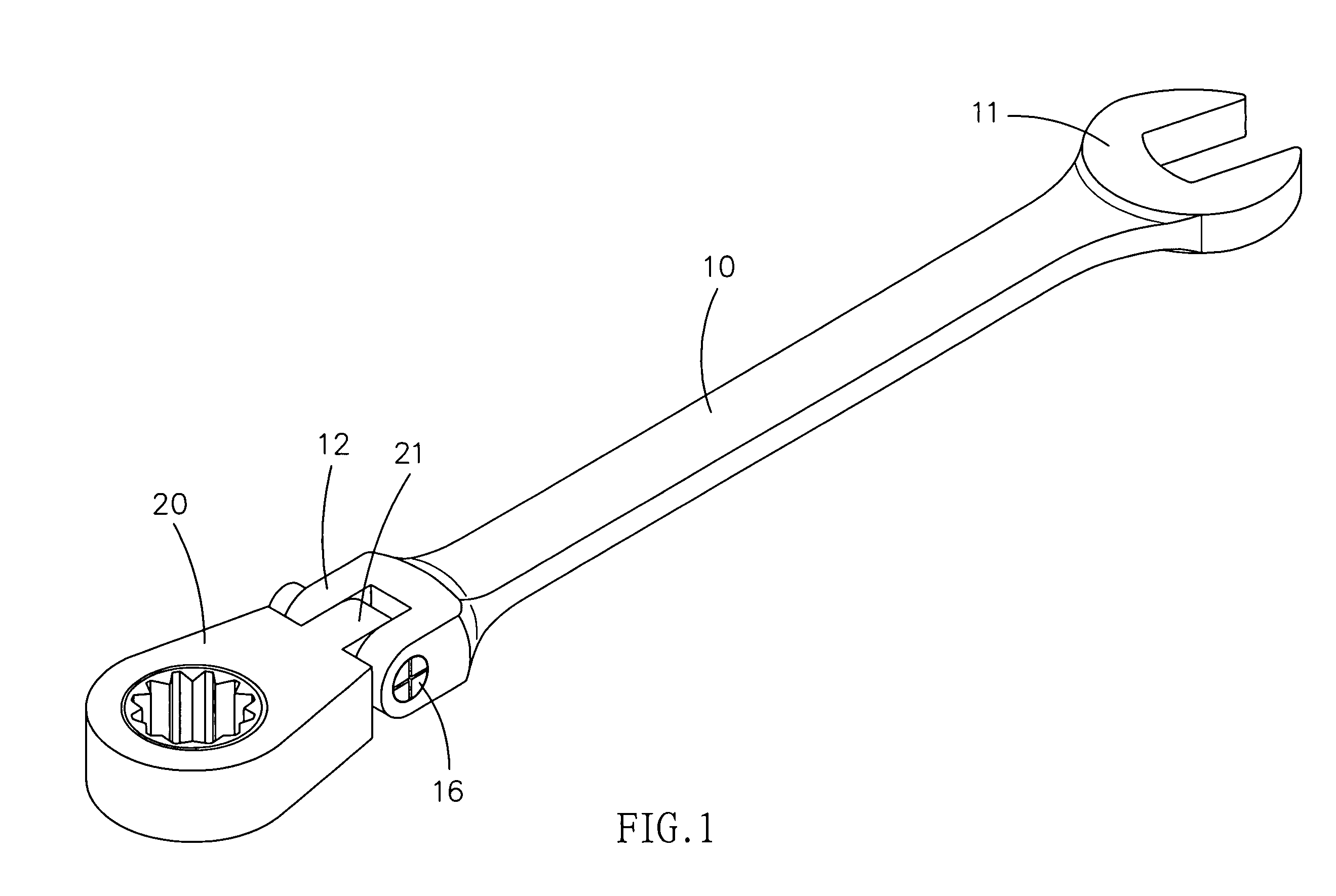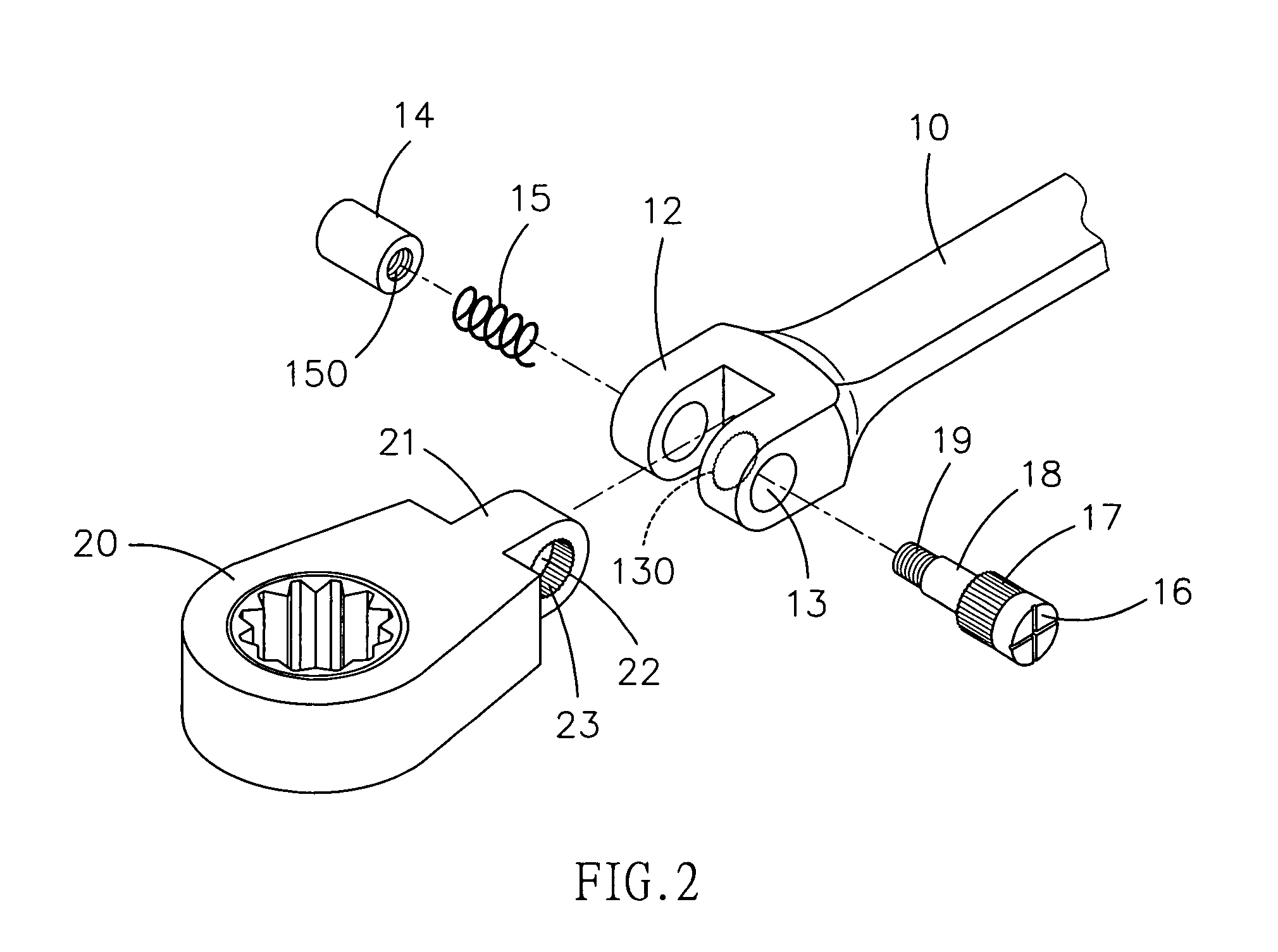Bendable wrench
- Summary
- Abstract
- Description
- Claims
- Application Information
AI Technical Summary
Benefits of technology
Problems solved by technology
Method used
Image
Examples
Embodiment Construction
[0018]Referring to FIGS. 1 and 2, there is shown a bendable wrench in accordance with the preferred embodiment of the present invention. The bendable wrench includes a handle 10 formed with an open end 11 and a head 20 pivotally connected to the other end of the handle 10. The angle between the head 20 and the handle 10 can easily changed and firmly retained. The handle 10 may include a box end in another embodiment. The head 20 may be an open end, a box end, a money wrench head or a selective one-way wrench head.
[0019]The handle 10 includes two ears 12 formed at the end opposite to the open end 11. Each of the ears 12 defines an aperture 13. A plurality of teeth 130 is formed on the wall of the aperture 13 of one of the ears 12. The teeth 130 may extend only a portion of the axial length of the wall of the aperture 13 of the ear 12.
[0020]The head 20 includes an ear 21 formed at an end. The ear 21 defines an aperture 22. A plurality of teeth 23 is formed on the wall of the aperture ...
PUM
 Login to View More
Login to View More Abstract
Description
Claims
Application Information
 Login to View More
Login to View More - R&D
- Intellectual Property
- Life Sciences
- Materials
- Tech Scout
- Unparalleled Data Quality
- Higher Quality Content
- 60% Fewer Hallucinations
Browse by: Latest US Patents, China's latest patents, Technical Efficacy Thesaurus, Application Domain, Technology Topic, Popular Technical Reports.
© 2025 PatSnap. All rights reserved.Legal|Privacy policy|Modern Slavery Act Transparency Statement|Sitemap|About US| Contact US: help@patsnap.com



